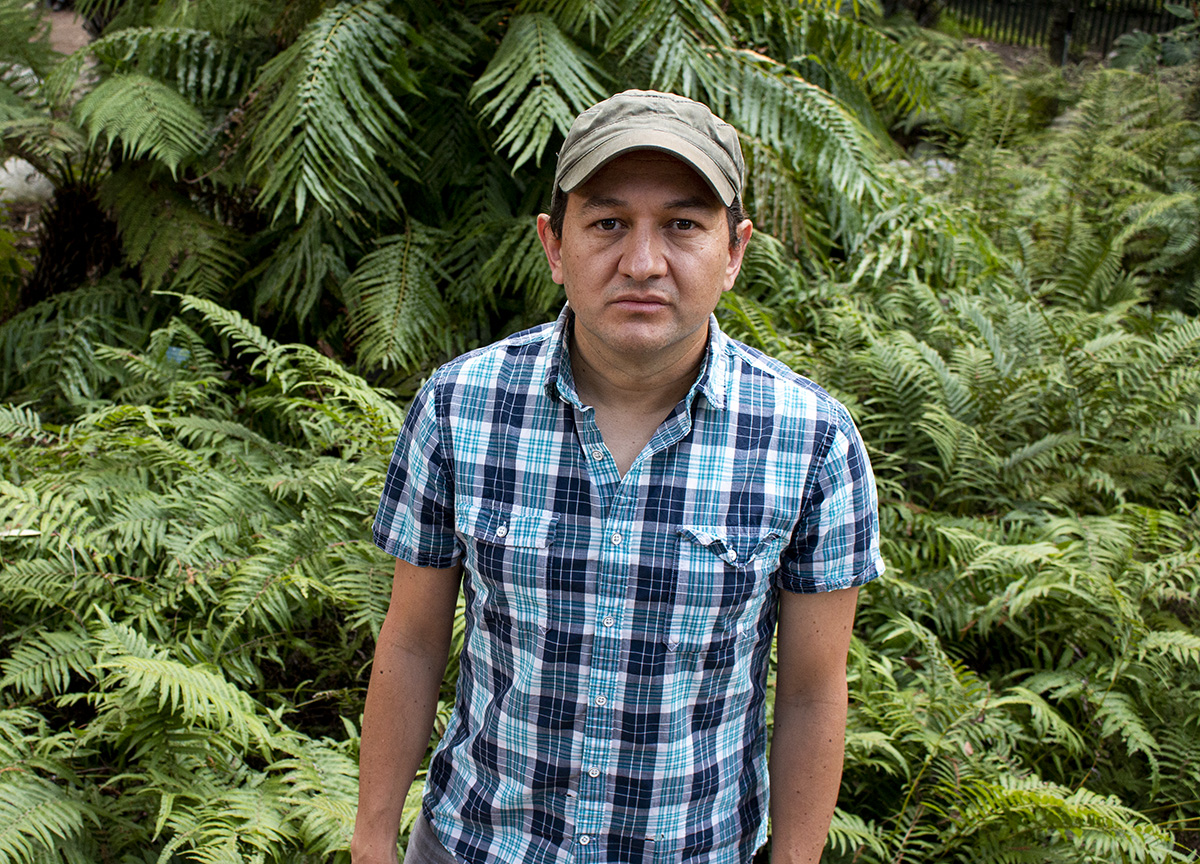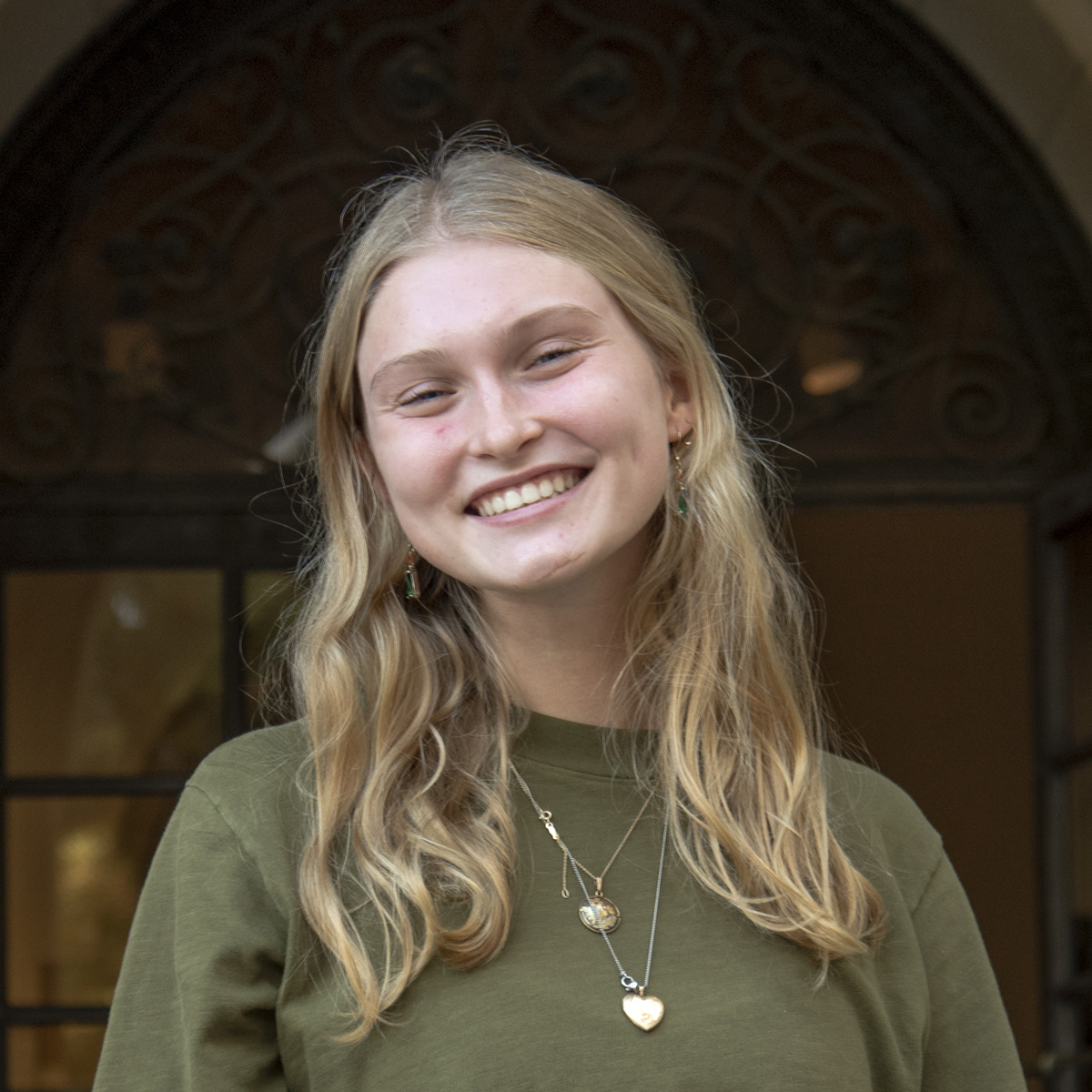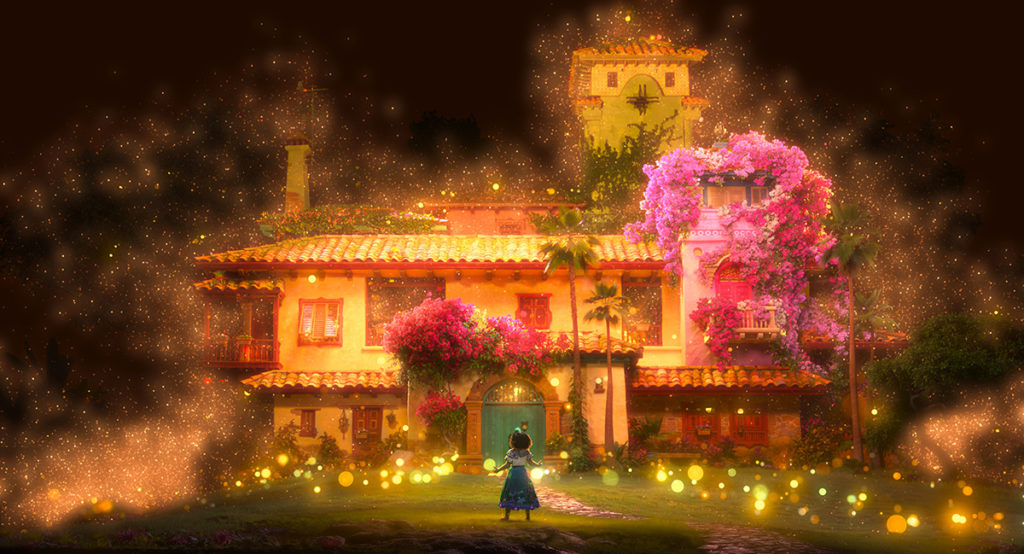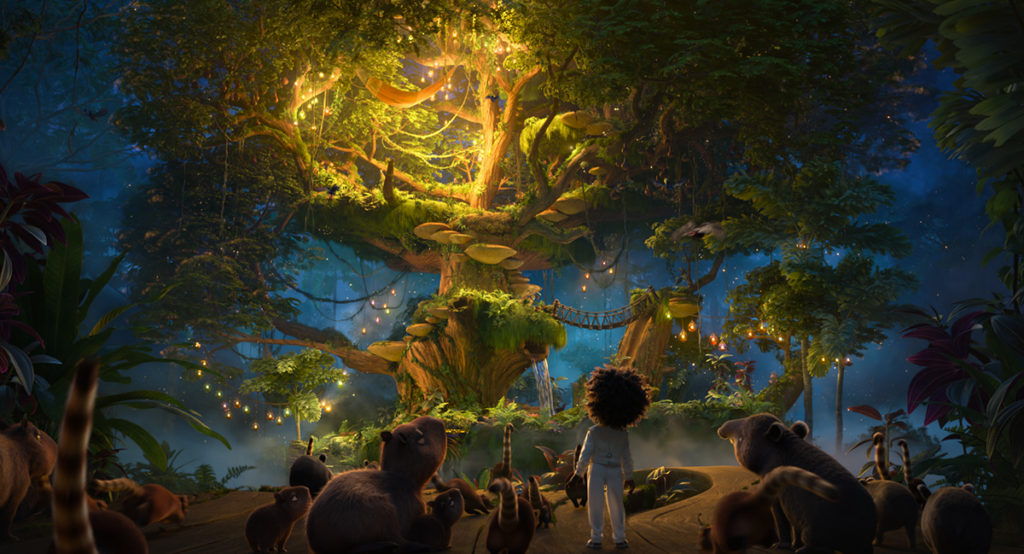Oscars 2022: Lush world of ‘Encanto’ blooms from on-screen representation

Assistant professor of ecology and evolutionary biology Felipe Zapata collaborated with Disney as a Colombian botanist in the Oscar-nominated film “Encanto,” where he worked with animators for accurate plant representation in the movie. (Megan Cai/Daily Bruin)

By Isabella Durgin
March 5, 2022 7:25 p.m.
This post was updated March 27 at 9:20 p.m.
Colombian representation in film blooms boldly in “Encanto.”
Nominated for three Academy Awards including Best Animated Feature Film, the Disney film follows the magical Madrigal family as they navigate their gifts and enchanted home – their “encanto” – set in the protected, forested landscape of Colombia. To ensure regional and cultural accuracy throughout the film, Walt Disney Animation Studios formed a cohort of consultants known as the Colombian Cultural Trust to advise on subjects such as Colombian architecture, food and history. As one of these consultants, assistant professor of ecology and evolutionary biology Felipe Zapata said he collaborated with Disney as a Colombian botanist to represent plants such as the wax palm and biomes such as the cloud forest.
“Initially, the meetings were mainly about the wax palm and the cloud forests, and I had a lot of experience as a botanist because I did a lot of fieldwork in the cloud forest,” Zapata said. “Even though I was never studying the wax palms, I was familiar with the wax palms – I have seen them all my life. My family’s from the region where these wax palms are very common, and I spent my childhood visiting places where this palm grows.”
When thinking about the Colombian landscape, Zapata said the biome of the cloud forest – while not restricted to Colombia – is especially prominent in the country. This particular type of forest, as opposed to the Gran Chaco forest or the Amazon rainforest, fills the background of the film, he said. Specifically, he said the wax palm – the largest palm species in the world – composes most of what “Encanto” viewers see around the village.
The palm also takes the stage in Isabela’s (Diane Guerrero) song, “What Else Can I Do?” as her gift involves plants and flowers. Alumnus and head of effects animation Erin Ramos said the decision to include the wax palm and other plants in the scene was based on writer Lin-Manuel Miranda’s lyrics. She said the effects team worked on synching the animating rates to the tempos and words in the music and matching flourishes to the integrity of the plants’ structures.
“When we are animating plants, we look at the different pieces that they’re comprised of and figure out how to best animate these things,” Ramos said. “The sundews, for example, have this cool unfurl that they do, so we wanted to make sure we rigged up those plants to compliment just the design of them … because they had these long petals.”
[Related: Film experts discuss Black experience, history in entertainment industry]
Each species required its own animation cycle, which Ramos said lasts for about 12 frames, with one second of animation being composed of 24 frames. The growth of those plants, then, had to be completed quickly, and she said the cycles typically exaggerate motion, where a plant will sprout out further than where it ends up resting later.
Distinctive colors of particular species can also be spotted, Zapata said, such as the easily recognizable white and silver sheen of the tropical tree yarumo. Others such as aroids – common houseplants but wild in Colombia – and plants in the Melastomataceae family – identified by the deep, contrasting veins on their leaves – are shown in scenes such as when Antonio (Ravi Cabot-Conyers) enters his magical forest room, he said. Colorful bougainvillea vines – originally from Southeast Asia but found in the tropics – adorn the Madrigals’ casita, and Zapata said the river just outside of the encanto appears pink because of the flowers of the riverweed plants, similar to Colombia’s river Caño Cristales.

Beyond meticulously selected details, such as choosing green for Bruno’s (John Leguizamo) prophetic gift to match the Colombian emerald resources, Ramos said the animation team also focused on incorporating magic alongside the realistic Colombian details. Pre-production discussions delved into how the Latin American creative concept of magical realism would define how the Madrigals’ magic functions, she said. For example, Ramos said the Madrigals’ casita is imbued with magic and a personality, but its motions are based on how its materials, such as wood and tile, would move rather than the house being anthropomorphized.
Additionally, alumnus and production office manager on “Encanto” Babatunde Akinloye said he worked across departments to ensure accuracy and authenticity to the Madrigals’ story, such as with the choreography. As part of the Disney Animation Black Employee Group, Akinloye said he participated in discussions about skin tones for Afro Latin characters and also oversaw relationships with Disney’s internal Latino employees in the Familia group.
[Related: Sundance 2022: ‘Every Day In Kaimukī’ explores meaning of home, complexities of heritage]

The film’s specificity to Colombia works on both levels of engaging Colombian viewers with familiar details and introducing non-Colombian viewers to the country, Ramos said. For Zapata, watching the film representation of his home was sentimental, and he said he hopes Isabela and Antonio’s biology-adjacent gifts will spark an interest in Colombian botany. Ramos said her experience growing up as a minority and not seeing herself in the media makes her reflect on the legacy of her work on “Encanto.”
“I don’t think I knew how much I was starved to see someone that looked like me on screen until I finally did,” Ramos said. “So the fact that we’re doing this now, and there are kids who are three years old, four years old, who already had that representation, who don’t know a world where they don’t see themselves on screen, is amazing.”


